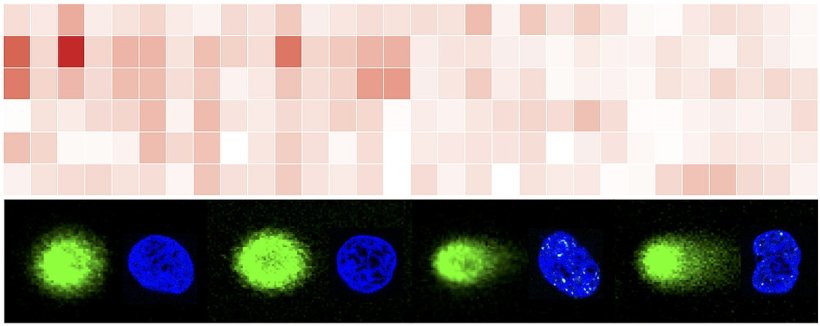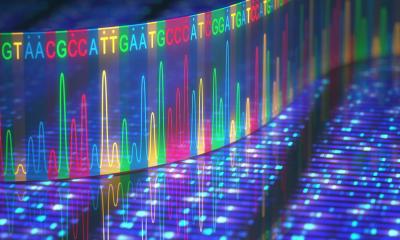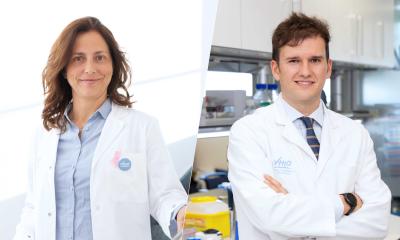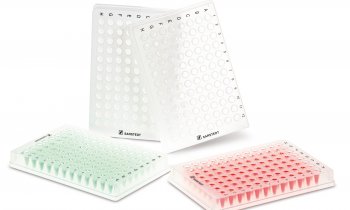
©Mamontova et al. 2024 (open access publication, CC-BY-NC 4.0)
News • DNA damage response
New insights into the DNA damage response
Genome instability can cause numerous diseases. Cells have effective DNA repair mechanisms at their disposal. A research team at the University of Würzburg has now gained new insights into the DNA damage response.
In our study, we focused on so-called long non-coding RNA transcripts. Previous data suggest that some of these transcripts act as regulators of genome stability
Kaspar Burger
Whenever cells divide, there is a high risk of damage to the genetic material. After all, the cell has to duplicate its entire genetic material and copy billions of genetic letters before it divides. This repeatedly results in “reading errors” of the genome. However, other factors are also responsible for the accumulation of DNA damage in the course of a person's life: exposure to sun light, alcohol and cigarettes are just a few examples of factors that are known to damage the genetic material and thus can cause cancer, among other things.
Of course, the cell is not powerless in the face of such lesions. It has an extensive catalog of cellular mechanisms that are set in motion following DNA damage. DNA damage response, or DDR for short, is the technical term for this. Specific signaling pathways usually initiate the immediate recognition and repair of DNA damage, thus ensuring the survival of the cell.
A new look at the DNA damage response
A team of scientists from Julius-Maximilians-Universität Würzburg (JMU) in Bavaria, Germany, has now taken a closer look at one of these signaling pathways. The group has identified a new mechanism of the DNA damage response that is mediated via an RNA transcript. Their results help to broaden the conceptual view on the DNA damage response and to link it more closely with RNA metabolism.
Dr. Kaspar Burger, junior research group leader at the Department of Biochemistry and Molecular Biology, was responsible for this study. The group has published the results of their investigations in the journal Genes & Development.
RNA transcripts as regulators of genome stability
“In our study, we focused on so-called long non-coding RNA transcripts. Previous data suggest that some of these transcripts act as regulators of genome stability,” says Kaspar Burger, explaining the background to the work. The study focused on the nuclear enriched abundant transcript 1 - also known as NEAT1 - which is found in high concentrations in many tumor cells. NEAT1 is also known to react to DNA damage and to cellular stress. However, its exact role in the DNA damage response was previously unclear.
“Our hypothesis was that RNA metabolism involves NEAT1 in the DNA damage response in order to ensure the stability of the genome,” says Burger. To test this hypothesis, the research group experimentally investigated how NEAT1 reacts to serious damage to the genome - so-called DNA double-strand breaks - in human bone cancer cells. The result: “We were able to show that DNA double-strand breaks increase both the number of NEAT1 transcripts and the amount of N6-methyladenosine marks on NEAT1,” says the scientist.
RNA modification marks are often deregulated in cancer cells
Methyladenosine marks on RNA transcripts are a topic that scientists have not been dealing with for very long. They fall into the area of epitranscriptomics - the field of biology that deals with the question of how RNA modifications are involved in the regulation of gene expression. Methyl groups play a key role in this. It is known, for example, that RNA modifications are often misplaced in cancer cells.
Our hypothesis was that RNA metabolism involves NEAT1 in the DNA damage response in order to ensure the stability of the genome
Kaspar Burger
NEAT1 releases an DNA repair factor
The experiments conducted by Kaspar Burger and his team show that the frequent occurrence of DNA double-strand breaks causes excessive methylation of NEAT1, which leads to changes in the NEAT1 secondary structure. As a result, highly methylated NEAT1 accumulates at some of these lesions to drive the recognition of broken DNA. In turn, experimentally induced suppression of NEAT1 levels delayed the DNA damage response, resulting in increased amounts of DNA damage.
NEAT1 itself does not repair DNA damage. However, as the Würzburg team discovered, it enables the controlled release and activation of an RNA-binding DNA repair factor. In this way, the cell can recognize and repair DNA damage highly efficiently.
According to the scientists, knowledge about the role of NEAT1 methylation in the recognition and repair of DNA damage could open up new therapeutic options for tumors with high NEAT1 expression. However, it must first be clarified whether these results, which were obtained in simple cell systems, can also be transferred to complex tumor models.
Kaspar Burger's research was supported by the German Cancer Aid and the Mildred Scheel Early Career Center for Cancer Research (MSNZ) in Würzburg.
Quelle: Julius-Maximilians-Universität Würzburg
07.10.2024











